Sexualities and Orientations
Explore LGBTQ+ Sexuality and Orientation Insights
This section provides an inclusive overview of sexualities and orientations to foster understanding in the furry and pup communities.
Abrosexual

Abrosexual refers to a fluid sexual orientation where a person’s sexual attraction changes over time. These shifts may involve different genders, levels of attraction, or the complete absence of attraction. The frequency and intensity of these changes can vary greatly from person to person, with some experiencing shifts daily, while others may notice changes over weeks, months, or even years. Abrosexuality highlights the dynamic and evolving nature of attraction for those who identify with this orientation. It is important to respect and validate the experiences of abrosexual individuals, as their journey is unique and deeply personal.
Accipiosexual

Accipiosexual refers to an individual who experiences sexual attraction primarily through receiving sexual attention or advances from others, rather than initiating such interactions themselves. This term highlights a unique aspect of sexual orientation where the focus is on the act of being pursued or approached, which can be a significant and defining factor in their romantic or sexual experiences. People who identify as accipiosexual often find that their desire is sparked or heightened when someone else makes the first move, emphasizing the importance of external initiation in their sexual attraction and relationships.
Aegosexual

Aegosexual refers to a specific type of sexual orientation where an individual experiences sexual attraction but does not desire to engage in sexual activities themselves. This term is used to describe people who may feel aroused or interested in sexual content or fantasies involving others but have little to no interest in participating personally in sexual acts. It is an important concept within the broader spectrum of sexual identities, helping to better understand and describe the diverse ways people experience attraction and desire.
Allosexual

Allosexual refers to individuals who experience sexual attraction to others. Unlike asexual people, who typically do not feel sexual attraction, allosexual individuals may experience this attraction in varying degrees and forms. The term is used to describe a broad range of people who have the capacity for sexual desire and interest, encompassing many different orientations and preferences within the spectrum of human sexuality.
Androgynosexual

Androgynosexual refers to a person who experiences romantic or sexual attraction primarily toward individuals who present themselves with androgynous characteristics, blending both traditionally masculine and feminine traits in their appearance or identity. This term is used to describe a specific orientation where the attraction is focused on those who embody a mix of gender expressions, rather than being limited to strictly male or female presentations. People who identify as androgynosexual may find themselves drawn to the unique and fluid qualities of androgynous individuals, appreciating the diverse way in which gender can be expressed beyond conventional binaries.
Androphilic / Androsexual

Androphilic, also referred to as androsexual, is a term used to describe an attraction to masculinity or men, regardless of one’s own gender identity. This concept is inclusive and can apply to individuals of any gender who find themselves drawn to male or masculine-presenting individuals. The term is often used in discussions around sexuality, as it provides a more inclusive way to describe attraction that isn’t necessarily tied to binary gender norms.
For some, using “androphilic” or “androsexual” offers a way to express their orientation without conforming to traditional labels like “gay” or “straight.” These terms are particularly helpful in creating language that encompasses diverse experiences of attraction, especially for non-binary or gender-nonconforming individuals. By focusing on attraction to masculinity or men, rather than the gender identity of the person feeling the attraction, these terms allow for a broader, more inclusive understanding of human sexuality.
Aroace

Aroace refers to a person who identifies as both aromantic and asexual. Aromantic individuals experience little to no romantic attraction to others, while asexual individuals experience little to no sexual attraction. Being aroace means that a person identifies with both of these orientations, encompassing both their romantic and sexual identities.
People who are aroace may still form deep, meaningful relationships, but these connections are typically not based on romantic or sexual attraction. Instead, they often value strong friendships, familial bonds, or other forms of companionship. It’s important to note that the aroace experience can vary greatly from person to person, with some individuals identifying as both aromantic and asexual in different ways or to differing extents.
Understanding and respecting the aroace identity is vital in fostering inclusivity and validation for everyone, regardless of how they experience attraction or form relationships. Acknowledging and learning about diverse orientations like aroace helps create a world where everyone feels seen, accepted, and valued.
Aroflux

Aroflux sexuality refers to a unique experience within the aromantic spectrum. Individuals who identify as aroflux may find that their level of romantic attraction fluctuates over time. This means they might experience shifts in how much, how often, or in what way they feel romantic attraction toward others. At times, they may feel completely aromantic, experiencing no romantic attraction at all, while at other times, they might feel varying degrees of romantic interest.
This fluidity can differ from person to person, with some noticing changes over days, weeks, or even longer periods. For some, these fluctuations may also involve different types of romantic feelings or preferences. Aroflux is an identity that highlights the dynamic and personal nature of romantic experiences, providing a validating term for those who feel their romantic attraction doesn’t stay consistent. It’s part of the broader aromantic spectrum, which encompasses diverse ways of relating to romance and connection.
Aromantic

Aromanticism is a romantic orientation characterized by the absence of romantic attraction toward others. People who identify as aromantic often do not experience the desire to form traditional romantic relationships, though they may still value deep, meaningful connections with friends or family. Aromantic individuals can have fulfilling lives and relationships that don’t fit conventional romantic norms.
Being aromantic doesn’t necessarily mean a lack of emotional intimacy or love. Many aromantic individuals form strong platonic bonds, enjoy companionship, and build rich social networks. Some may also experience other forms of attraction, such as aesthetic, intellectual, or sexual attraction, depending on how they personally identify. Aromanticism exists on a spectrum, and different people may experience and express it in diverse ways.
Asexual
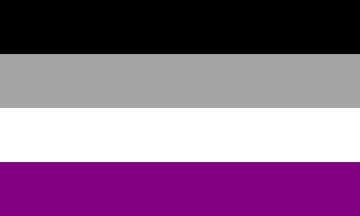
Asexuality is a sexual orientation characterized by a lack of sexual attraction to others. People who identify as asexual may not experience the desire to engage in sexual activities, though they can still form deep emotional connections and have fulfilling relationships. Asexuality exists on a spectrum, and individuals may experience varying levels of romantic attraction, intimacy, or physical connection, which are not necessarily tied to sexual attraction.
It is important to note that being asexual does not mean a lack of interest in relationships or intimacy altogether. Many asexual individuals pursue meaningful romantic or platonic bonds, and some may choose to engage in physical intimacy for various reasons, such as to please a partner or to express love in a way that feels right for them. Asexuality is diverse, and each individual’s experience is unique, shaped by their personal feelings, preferences, and boundaries.
Raising awareness about asexuality helps foster understanding and acceptance. Asexual individuals often face misconceptions and invalidation from those who may not fully understand their experiences. By promoting education and open dialogue, society can create a more inclusive environment where asexual people feel respected and valued for who they are.
Autosexual

Autosexual refers to a person who experiences primary sexual attraction to themselves. This means that their sexual interest and desire are focused mainly on their own body and self-image rather than on other people. Individuals who identify as autosexual often find that their own physical presence and self-stimulation provide the most intense and fulfilling sexual experiences for them. This orientation highlights a unique and deeply personal connection between one’s own body and sexual identity, emphasizing self-love and self-pleasure as central elements of their sexuality.
Benignosexual
Benignosexual refers to a sexual orientation characterized by an attraction to others that is gentle, kind, and non-harmful in nature, emphasizing positive and respectful connections. This term highlights a form of sexuality that prioritizes mutual care and considerate interactions between partners.
Bisexual
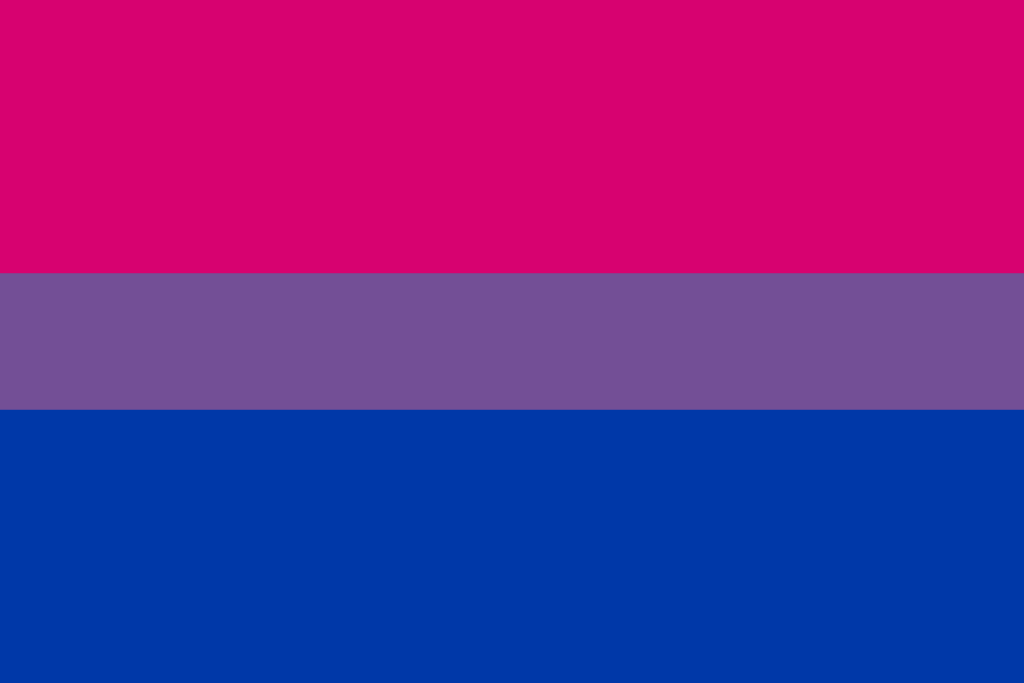
Bisexuality refers to the sexual, romantic, or emotional attraction to individuals of more than one gender. It is a valid and natural sexual orientation that exists on a spectrum, as human attraction can vary widely from person to person. Being bisexual does not necessarily mean an equal attraction to all genders; instead, it acknowledges a capacity for attraction beyond a single gender identity.
People who identify as bisexual may experience different levels of attraction to men, women, or non-binary individuals, and this can change over time. Bisexuality challenges rigid ideas about sexual orientation by embracing fluidity and diversity in relationships and connections. It is an important part of the broader LGBTQ+ community, contributing to the understanding and acceptance of varied human experiences.
Cupiosexual

Cupiosexual refers to a person who does not experience sexual attraction but still desires to have a sexual relationship or engage in sexual activities. This term describes individuals who may lack innate sexual feelings yet feel a strong interest or longing to participate in sexual experiences with others. It highlights a unique aspect of human sexuality where the desire for intimacy and connection exists independently of sexual attraction
Demisexual

Demisexuality is a sexual orientation characterized by experiencing sexual attraction only after forming a deep emotional connection with someone. For demisexual individuals, physical or sexual attraction does not typically occur without a significant bond or sense of intimacy. This emotional connection is often built on trust, mutual respect, and meaningful interaction, making their experiences of attraction distinctly different from those who feel an immediate or spontaneous sexual attraction.
People who identify as demisexual may find themselves forming romantic or emotional connections more easily than sexual ones. Their orientation exists on the asexual spectrum, as it shares similarities with asexuality, particularly in the lack of immediate sexual attraction. However, unlike those who are fully asexual, demisexual individuals can and do experience sexual attraction, but only under specific circumstances that involve emotional closeness.
It’s important to understand that demisexuality is just one part of the diverse spectrum of human sexuality. By recognizing and respecting these identities, we contribute to a broader understanding of the complexities of attraction and relationships. For those who identify as demisexual, their orientation can be a key part of how they navigate intimacy, connection, and personal relationships.
Demiromantic

Demiromantic individuals experience romantic attraction only after forming a deep emotional connection with someone. Unlike those who may feel romantic attraction quickly or based on initial impressions, demiromantic people require a significant bond or meaningful relationship before such feelings can develop. This emotional connection is essential and serves as the foundation for any romantic interest they may feel.
Demiromanticism exists on the aromantic spectrum, highlighting the diversity of romantic orientations and how people experience attraction differently. For demiromantic individuals, their relationships often prioritize emotional depth and trust, as these are critical for fostering romantic feelings. Understanding and respecting this orientation can help create a more inclusive and supportive environment for everyone.
Finsexual

Finsexuals are exclusively attracted to other people who are Feminine In Nature or (FIN), usually used by non-binaries, but binary people can use it too. Finsexuals’ are generally attracted to women and feminine people.
Fraysexual

Fraysexual refers to a specific sexual orientation where an individual feels attracted to someone primarily when they are just getting to know them or when the relationship is still new and fresh. However, as the relationship develops and becomes more familiar, their sexual attraction tends to decrease or fade away. This means that the initial excitement or novelty plays a significant role in their feelings of attraction. It is a unique experience that highlights how some people’s sexual attraction can depend heavily on the stage of the relationship rather than being constant over time.
Gay / Homosexual
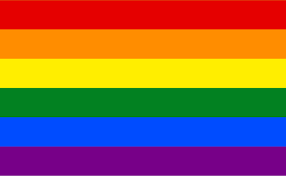
Gay, also known as homosexual, refers to a sexual orientation characterized by romantic or sexual attraction between individuals of the same gender. It is most commonly used to describe men who are attracted to other men, but the term is also embraced by many women who experience attraction to other women. As a part of the broader LGBTQ+ community, gay individuals have played a significant role in advocating for equal rights, acceptance, and representation in various aspects of society.
The term “gay” has evolved over time, both in meaning and usage. Historically, it was used to describe feelings of joy or cheerfulness, but in the 20th century, it became widely adopted as a positive and affirming label for same-sex attraction. Today, the word is often associated with pride, resilience, and the fight for social equity. While challenges remain, progress in legal rights, societal attitudes, and cultural visibility has empowered many gay individuals to live authentically and openly, fostering greater understanding and inclusivity worldwide.
Gay Male / Vincian

A gay male, also referred to as vincian within some communities, is a man who experiences romantic, emotional, or physical attraction exclusively or primarily towards other men. This term encompasses a rich diversity of experiences, identities, and relationships, all of which reflect the unique ways men connect with one another.
The term “vincian” is a poetic and alternative way to describe this identity, often used to honor the historical and cultural contributions of gay men throughout time. It serves as a reminder of the strength, love, and resilience present within this community, while also celebrating the profound connections shared between men who love men.
Greysexual
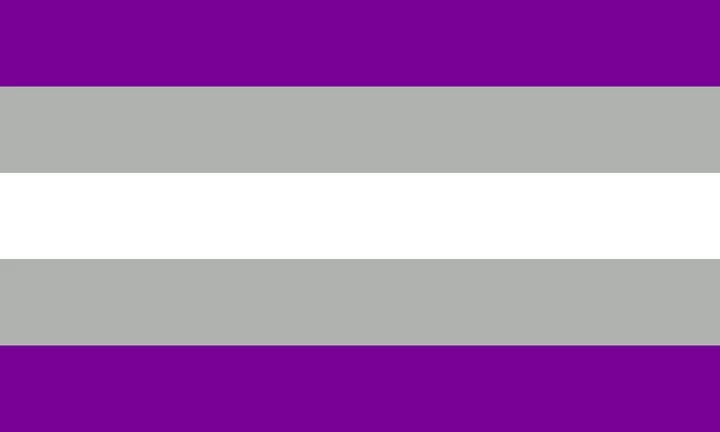
Greysexuality is a term that describes individuals who experience sexual attraction infrequently or under specific circumstances. It exists on the spectrum between asexuality and allosexuality, encompassing people who may not entirely identify as asexual but do not experience sexual attraction as frequently or as intensely as those who are allosexual. Greysexual individuals may feel sexual attraction occasionally or in unique situations, but it is not a predominant aspect of their lives.
This identity provides space for those who feel their experiences don’t fit neatly into the binary definitions of being entirely sexual or asexual. Greysexuality can help individuals articulate their relationship with sexual attraction while acknowledging the fluid and diverse nature of human experiences. It’s important to note that every greysexual person’s experience is unique, and their journey in understanding and expressing their identity may vary.
Gynephilic / Gynesexual

Gynephilic, also referred to as gynesexual, describes an attraction to femininity or individuals who identify as female, regardless of their biological sex or gender identity. This term is often used to encompass a broader spectrum of attraction, including those who might be drawn to women, trans women, or non-binary individuals who embrace feminine traits or expressions.
This word is particularly valuable in conversations about gender and sexuality because it allows people to articulate their attraction without being confined by binary labels. It recognizes the diversity of human experiences and identities, offering a more inclusive way to discuss preferences and orientations in a respectful and affirming manner.
Lesbian

Lesbian refers to a woman who is romantically, emotionally, or sexually attracted to other women. It is both a sexual orientation and a key part of many individuals’ identity within the broader LGBTQ+ community. The term has a rich history, rooted in the legacy of Sappho, an ancient Greek poet from the island of Lesbos, whose work often expressed deep affection and love between women.
For many, identifying as a lesbian is not only about attraction but also about embracing a shared culture and sense of belonging. Over time, lesbians have played significant roles in advocating for equal rights, fostering social change, and creating safe spaces for self-expression. Their contributions have helped shape the fight for visibility and equality, inspiring others to embrace who they are authentically and without fear.
Lithosexual

Lithosexuality, also known as akoisexuality, is a term used to describe individuals who experience sexual attraction but do not desire that attraction to be reciprocated or acted upon. For lithosexual individuals, the experience of attraction can be fulfilling on its own, without any need for a sexual relationship or physical intimacy. This identity exists within the broader spectrum of asexuality and highlights the diversity of personal experiences regarding attraction and relationships.
People who identify as lithosexual may feel drawn to others in a romantic or sexual way, yet the idea of engaging in sexual activity might not appeal to them. In some cases, they might even lose interest in someone if the attraction is reciprocated. This distinct perspective on attraction underscores the complexity and uniqueness of human relationships, emphasizing the importance of recognizing and respecting diverse identities.
Understanding lithosexuality involves acknowledging that everyone’s experience of attraction and connection is valid, even if it doesn’t align with societal norms or expectations. Like all identities, it plays a crucial role in fostering a sense of belonging and self-acceptance for those who resonate with it. By learning about and embracing such identities, we contribute to a more inclusive and empathetic world.
Lithromantic

Lithromantic, also referred to as akoiromantic, describes a romantic orientation in which an individual experiences romantic attraction but does not have the desire for those feelings to be reciprocated. People who identify as lithromantic might enjoy the idea of romance or the feelings associated with being romantically drawn to someone, but they may not wish to pursue a romantic relationship or have their attraction acknowledged in return. For some, the attraction may fade if a romantic relationship begins to develop, while for others, the feelings persist without the need for mutual involvement.
This orientation can exist on the aromantic spectrum, emphasizing the varied ways individuals experience or engage with romantic attraction. Lithromantic individuals may still value deep personal connections, friendships, or other forms of intimacy, even if they do not seek or desire traditional romantic partnerships. It’s important to recognize that being lithromantic is a valid and natural way of experiencing love and relationships, and understanding these diverse orientations helps foster a more inclusive world.
Minsexual
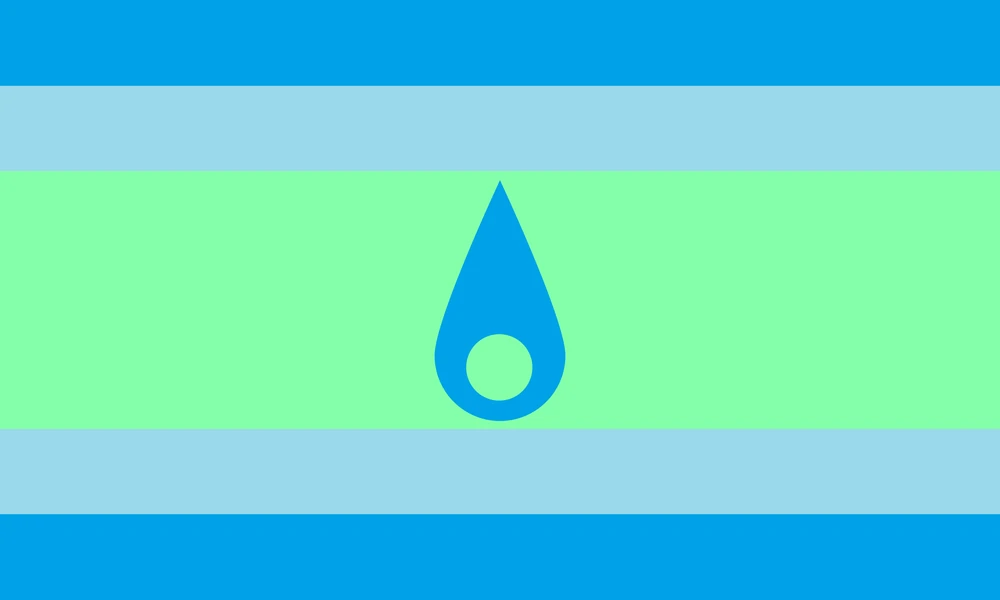
Minsexual refers to the exclusive attraction to those who are masculine in nature (MIN). This can include men, masculine aligned and/or masculine presenting non-binary people, and potentially masculine women.
Multisexual

Multisexual is an umbrella term used to describe individuals who experience romantic or sexual attraction to people of multiple genders. This attraction is not limited to just one gender and can encompass a wide spectrum of identities, reflecting the diverse and fluid nature of human attraction. Multisexuality can include identities such as bisexual, pansexual, polysexual, or other orientations that involve attraction to more than one gender, though each of these terms has its own unique nuances and definitions.
The term is inclusive and allows for the acknowledgment of the complexity of attraction without confining individuals to rigid categories. For many, identifying as multisexual offers a broader, more flexible way to describe their experiences. It provides a sense of community and understanding for those who feel their attractions don’t fit into more narrowly defined labels. This identity highlights the importance of respecting and validating the varied ways people experience and express love and connection.
Neptunic

Neptunic refers to the attraction to women, feminine non-binary people, and neutral non-binary people. It can also be described as attraction to all except men and/or masculine-aligned non-binary people.
Ninsexual

Ninsexual refers to the exclusive attraction to those who are non-binary in nature (NIN). This includes people who are non-binary, neutrois, androgyne, agender, and anyone whose gender or presentation is androgynous.
Omnisexual

Omnisexuality refers to a sexual orientation where an individual has the capacity to feel attraction, love, or desire for people of all genders. This includes male, female, non-binary, genderqueer, and other gender identities. Omnisexuality is similar to pansexuality in that both orientations signify attraction beyond gender boundaries, but some omnisexual individuals may feel that gender plays a role in their attraction, even if it is not a limiting factor. This nuanced distinction is often a personal one and can vary from person to person.
For those who identify as omnisexual, their attraction is inclusive and recognizes the diversity of gender identities. While gender may influence their preferences or connections, it does not act as a restriction or barrier to their feelings. Being omnisexual is simply another way to express the fluidity and complexity of human relationships and attraction, embracing the idea that love and desire can transcend traditional categories.
Pansexual

Pansexuality is a sexual orientation characterized by the ability to be attracted to individuals regardless of their gender or gender identity. This attraction is not limited by the traditional binary understanding of gender as male or female. Instead, pansexual individuals are open to forming emotional, romantic, or physical connections with people across the full spectrum of gender identities, including those who identify as non-binary, genderqueer, or genderfluid. They often emphasize that their attraction is based on the person’s character, personality, and individual essence rather than their gender.
The term “pansexual” comes from the Greek prefix “pan-,” meaning “all,” which reflects the inclusivity and openness associated with this orientation. Pansexuality is often misunderstood or conflated with bisexuality, but the two are distinct. While bisexuality generally refers to attraction to two or more genders, pansexuality specifically rejects the notion that gender is a defining factor in attraction. Many pansexual individuals see their orientation as transcending the boundaries of gender altogether, focusing instead on the unique qualities of each person.
It’s important to note that pansexuality is a valid and recognized identity within the LGBTQ+ community. People who identify as pansexual often stress the importance of visibility and awareness to combat stereotypes and misconceptions. Like any sexual orientation, pansexuality is deeply personal, and each individual may experience and define it in their own way. Embracing pansexuality is about celebrating love and connection in their most inclusive forms.
Polyamorous

Polyamory is a relationship style that involves engaging in multiple consensual, loving, and committed relationships simultaneously. It is based on the principles of honesty, mutual respect, and open communication between all parties involved. Unlike traditional monogamous relationships, polyamorous partnerships emphasize flexibility and the recognition that love and connection can be shared with more than one person in a healthy and ethical way.
At its core, polyamory is about fostering emotional intimacy and trust, allowing individuals to explore different dynamics and connections without the constraints of exclusivity. People who practice polyamory often establish clear boundaries and agreements to ensure that everyone feels secure and valued. This relationship style is not about casual dating or infidelity, but rather about creating meaningful, long-term bonds that honor the feelings and needs of all participants.
Polyamory can take many forms, ranging from hierarchical structures, where one relationship may take precedence over others, to more egalitarian approaches where all partnerships are considered equal. This diversity allows individuals to tailor their relationships to suit their unique preferences and circumstances. Ultimately, polyamory emphasizes freedom, authenticity, and the belief that love is not a finite resource but something that can grow and expand in limitless ways.
Polysexual

Polysexuality refers to a sexual orientation characterized by attraction to multiple genders, but not necessarily all genders. Those who identify as polysexual may feel drawn to individuals of specific genders while not experiencing attraction to others. It’s important to note that polysexuality is distinct from bisexuality and pansexuality, as it focuses on attraction to many, but not all, gender identities.
People who identify as polysexual may have preferences or inclinations that vary from person to person. Their experiences and relationships are unique and shaped by their personal attractions and feelings. This orientation emphasizes the fluid and diverse nature of human sexuality, allowing for a wide range of connections.
As with any identity, the way a polysexual individual experiences and expresses their orientation can be deeply personal. Respecting their identity and using inclusive language helps foster understanding and support within a broader community. Polysexuality is a valid and important part of the spectrum of sexual orientations.
Queer

Queer is a term that has evolved significantly over time, carrying various meanings depending on the context in which it is used. Historically, it was often employed as a slur to demean individuals who did not conform to traditional norms of gender or sexuality. However, in recent decades, the term has been reclaimed by many within the LGBTQ+ community as a powerful symbol of empowerment, inclusivity, and self-expression. By embracing “queer,” individuals and groups challenge societal expectations and celebrate the diversity of identities that exist outside the binary constructs of gender and sexual orientation.
For some, queer represents a fluid and open approach to identity, rejecting rigid labels and embracing the freedom to define oneself on one’s own terms. It is often used as an umbrella term that encompasses a broad spectrum of experiences and expressions within the LGBTQ+ community. This inclusivity allows people to connect with a shared sense of belonging while honoring the complexity and uniqueness of their individual journeys. Today, “queer” also serves as a focal point for activism, art, and academic discourse, fostering dialogues that push conventional boundaries and advocate for greater social acceptance and equality.
Despite its positive reclamation, it is important to recognize that not everyone within the LGBTQ+ community feels comfortable with or identifies with the term. For some, its historical use as a slur can evoke pain or discomfort, and they may prefer other terms to describe their identities. The evolving nature of “queer” highlights the importance of respecting individual preferences and understanding the diverse ways in which people choose to define themselves. As language continues to shift and change, the term remains a powerful reminder of the resilience and creativity of those who have embraced it as a source of pride and authenticity.
Sapphic

Sapphic refers to anything related to Sappho, the ancient Greek poet from the island of Lesbos, whose works often celebrated love and desire between women. Her poetry, though mostly surviving in fragments, has had a profound influence on literature and culture, symbolizing themes of romantic and emotional connections among women. The term has since evolved to broadly describe female same-sex attraction or relationships, encompassing both historical and contemporary contexts.
In modern usage, “Sapphic” serves as an inclusive descriptor for women who love women, embracing a spectrum of identities such as lesbian, bisexual, and queer. It provides a unifying term that honors the legacy of Sappho while offering a space for diverse experiences and expressions of love. The word carries with it a sense of history, artistry, and empowerment, making it a meaningful part of discussions about identity and representation.
Saturnic

The attraction towards individuals who present an androgynous or gender-neutral alignment and identify as non-binary. This term is often embraced by non-binary individuals themselves as a way to articulate their feelings of attraction without conforming to or depending on the traditional constructs of the gender binary.
Uranic

Uranic is a term that describes an attraction to men, masculine non-binary individuals, as well as neutral non-binary individuals. It can also be understood as an orientation characterized by attraction to all genders except for women and/or non-binary individuals who are feminine-aligned. This term provides a specific way to articulate preferences and identities within the spectrum of attraction, offering clarity and inclusivity for those who resonate with these experiences.

